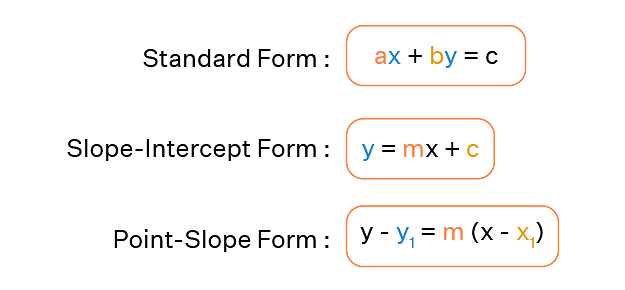The Points (1,3), (5,1) are Opposite vertices of a diagonal of a rectangle. If the other two vertices lie on the line y=2x+c, then one of the vertex on the other diagonal is?
Show Hint
When the diagonals of a rectangle bisect each other, their intersection point is the midpoint of both diagonals.
Steps:
- Find the midpoint: The coordinates of the midpoint \((3, 2)\) are calculated using the midpoint formula.
- Equation of the line: Since the midpoint \((3, 2)\) lies on the line, and it is given as \(y = 2x + c\), we substitute to find \(c\).
- Conclusion: Therefore, the equation of the line passing through the midpoint \((3, 2)\) of the diagonals of the rectangle is \(y = 2x - 4\).
Thus, the line equation is \(y = 2x - 4\).
- (1,-2)
- (0,-4)
- (2,0)
- (3,2)
The Correct Option is C
Solution and Explanation
Top Questions on Straight lines
- A rectangle ABCD has its side parallel to the line y=2x and vertices A,B,D are on y=1,x=1 and x=-1 respectively. The coordinate of C can be
- WBJEE - 2023
- Mathematics
- Straight lines
- Let $S_1$ and $S_2$ be respectively the sets of all $a \in R -\{0\}$ for which the system of linear equations $ a x+2 a y-3 a z=1$ $ (2 a+1) x+(2 a+3) y+(a+1) z=2$ $(3 a+5) x+(a+5) y+(a+2) z=3$ has unique solution and infinitely many solutions Then
- JEE Main - 2023
- Mathematics
- Straight lines
- Orthocentre of triangle having vertices as A (1,2), B(3,-4), C(0,6) is
- JEE Main - 2023
- Mathematics
- Straight lines
- A rectangle is drawn by lines x=0, x=2, y=0 and y=5. Points A and B lie on coordinate axes. If line AB divides the area of rectangle in 4:1, then the locus of mid-point of AB is?
- JEE Main - 2023
- Mathematics
- Straight lines
- Let the six numbers $a_1, a_2, a_3, a_4, a_5, a_6$, be in AP and $a_1+a_3=10$ If the mean of these six numbers is $\frac{19}{2}$ and their variance is $\sigma^2$, then $8 \sigma^2$ is equal to :
- JEE Main - 2023
- Mathematics
- Straight lines
Questions Asked in MHT CET exam
- Two monkeys off mass 10 kg and 8 kg are moving along a vertical light rope the former climbing up with an acceleration of 2 m/second square while the latter coming down with a uniform velocity of 2 m/sec square find the tension in the rope at the fixed support
- MHT CET - 2024
- tension
- Total genetic content of an organism is called
- MHT CET - 2024
- Non-Mendelian Genetics
- How many ATP molecules are needed as an initial investment in the glycolytic cycle (normal glycolysis)?
- MHT CET - 2024
- Glycolysis
- Which disease is primarily spread by female Anopheles mosquitoes?
- MHT CET - 2024
- HIV and AIDS
- Find k if \(\int_{0}^{\frac{1}{2}}[\frac{x^2dx}{(1-x^2)^{\frac{3}{2}}}]=\frac{k}{6}\).
- MHT CET - 2023
- Definite Integral
MHT CET Notification
 MHT CET 2024 CAP Round 2 Seat Allotment Out, Direct Link here.Aug 26, 2024
MHT CET 2024 CAP Round 2 Seat Allotment Out, Direct Link here.Aug 26, 2024Concepts Used:
Straight lines
A straight line is a line having the shortest distance between two points.
A straight line can be represented as an equation in various forms, as show in the image below:

The following are the many forms of the equation of the line that are presented in straight line-
1. Slope – Point Form
Assume P0(x0, y0) is a fixed point on a non-vertical line L with m as its slope. If P (x, y) is an arbitrary point on L, then the point (x, y) lies on the line with slope m through the fixed point (x0, y0) if and only if its coordinates fulfil the equation below.
y – y0 = m (x – x0)
2. Two – Point Form
Let's look at the line. L crosses between two places. P1(x1, y1) and P2(x2, y2) are general points on L, while P (x, y) is a general point on L. As a result, the three points P1, P2, and P are collinear, and it becomes
The slope of P2P = The slope of P1P2 , i.e.
\(\frac{y-y_1}{x-x_1} = \frac{y_2-y_1}{x_2-x_1}\)
Hence, the equation becomes:
y - y1 =\( \frac{y_2-y_1}{x_2-x_1} (x-x1)\)
3. Slope-Intercept Form
Assume that a line L with slope m intersects the y-axis at a distance c from the origin, and that the distance c is referred to as the line L's y-intercept. As a result, the coordinates of the spot on the y-axis where the line intersects are (0, c). As a result, the slope of the line L is m, and it passes through a fixed point (0, c). The equation of the line L thus obtained from the slope – point form is given by
y – c =m( x - 0 )
As a result, the point (x, y) on the line with slope m and y-intercept c lies on the line, if and only if
y = m x +c



